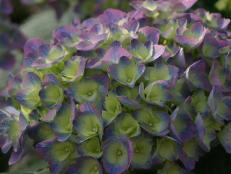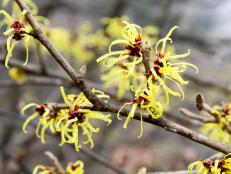How to Propagate Hydrangeas
Use cuttings or an easy ground layering method to grow more gorgeous shrubs for your garden.
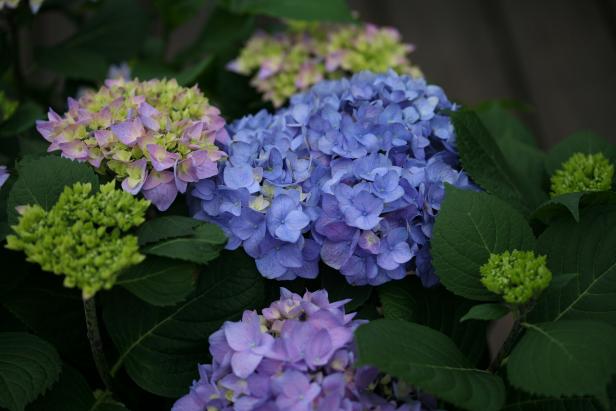
Image courtesy of Proven Winners

How do you progagate hydrangeas? Follow the easy step-by-step instructions with photos below to progagate hydrangeas by rooting a cutting or ground layering.
Propagate Hydrangeas by Rooting a Cutting
Step 1: To root a cutting from an existing plant, start by taking 6-inch cuttings from soft hydrangea stems during summer. Soft stems are green and fleshy, as opposed to the hard, woody ones near the base of the plant. Step 2: Keep a couple of leaves near the top of each cutting and remove the rest. Step 3: If the two remaining leaves on the stem are large, cut them in half crosswise. This helps prevent loss of moisture.

Photo by Lynn Coulter

Photo by Lynn Coulter

Photo by Lynn Coulter
Step 4: Dip or dust the cutting with rooting hormone for best results. Some gardeners skip this step, although roots may take longer to form. Step 5: Fill some small pots that have drainage holes with damp vermiculite, coarse sand or another sterile growing medium. Use your finger to poke a hole in the medium. (This helps prevent dislodging the rooting hormone, which can happen if you stick the cutting directly in the medium.) Put the cuttings in the holes and gently fill in around them. Water the pots, then cover with plastic bag or plastic wrap, using small sticks or stakes to keep the plastic off the leaves.

Photo by Lynn Coulter

Photo by Lynn Coulter
Step 6: Put the pots in a shady spot. Check the cuttings often and mist as needed — you want the cuttings to stay moist, not soggy. Roots should form in 1 to 4 weeks. To test, gently tug on the cuttings. If you feel some resistance, they’re rooting. Move them up to larger pots and apply a slow-release fertilizer. Your cuttings can be planted in the ground next spring. Keep them in a greenhouse, if you have one, when the temperatures drop. If you don’t have a greenhouse, bury the pots up to their rims in the ground, and cover them with lightweight mulch for the winter.
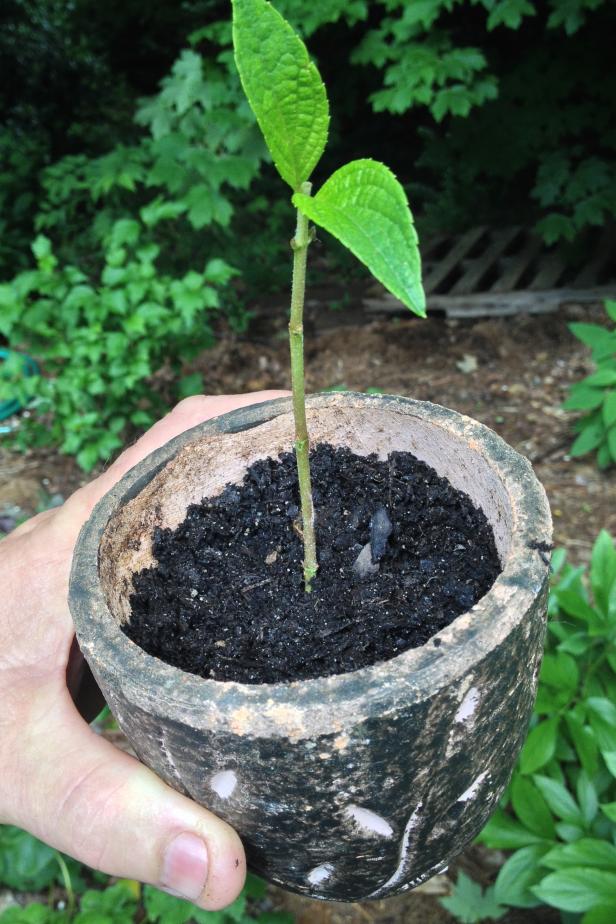
Photo by Lynn Coulter
Propagate Hydrangeas by Layering
Sometimes hydrangeas layer themselves. This can happen when a soft stem growing near the ground gets buried under fallen leaves or dirt washed from another part of the yard. Eventually, the stem forms roots and can be separated from the mother plant. Duplicating this process is easy.
Step 1: Begin by watering your hydrangea the night before so it's well hydrated. The next morning, find a soft, flexible stem growing close to the ground that's about a foot long — make sure it will actually touch the ground. Remove about 6 inches of leaves on the part of the stem that touched the ground, preserving the ones at the end of the stem. Step 2: Use a sharp knife or the blade of your pruners to scrape an area of 2-3 inches long on the underside of the soft stem. This is where the new roots will form. Step 3: Dip your finger into the rooting hormone and spread it over the scraped area.

Lynn Coulter

Photo by Lynn Coulter

Photo by Lynn Coulter
Step 4: Make a short trench about 2 inches deep and bury the leafless part of the stem you coated with rooting hormone. Step 5: Use a rock or brick to help keep the leafless part of the stem under the soil. Water the ground and keep it moist, but not soggy. Step 6: If you can gently tug on the buried stem and feel resistance, roots have probably formed. If you’re layering in the spring, prune off the rooted stem and replant it by August. If you’re layering in the summer, wait to prune and replant until next spring.

Photo by Lynn Coulter
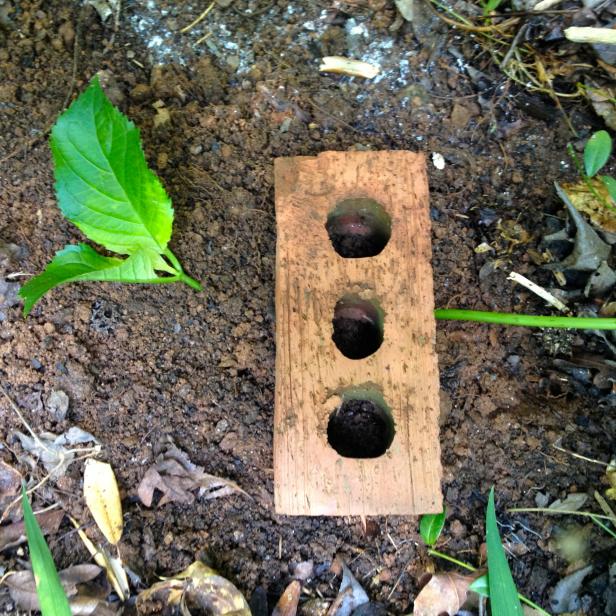
Photo by Lynn Coulter

Photo by Lynn Coulter







